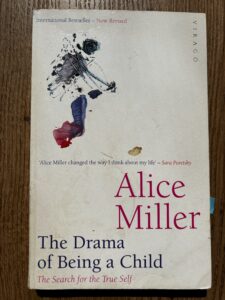Care, Body, Dying: A Fresh Approach to Existential Psychotherapy
We often think of existential therapy as primarily concerned with death and mortality. Irvin Yalom’s classic book “Staring at the Sun” come to mind as a prime example of this approach. While death and mortality are certainly important themes, my experience as both a psychotherapist and a philosopher has led me to see human existence as shaped by three fundamental, interconnected dimensions that go beyond just confronting death.
Care
The first dimension is care. Unlike other mammals that quickly become independent, human infants spend months completely dependent on others for survival. The term for the first 3 months of baby’s life is ‘the fourth trimester’ – underscoring that at this stage the baby is still en embrio that exists outside of the womb. This early experience of requiring care shapes our psychological development in profound ways. Our need for care doesn’t vanish as we grow older – it transforms and manifests itself in various ways throughout our lives, sometimes in patterns we don’t even recognize.
Body
The second dimension is our embodied nature. We exist through our bodies, which both enable and constrain our experiences. Our bodies make demands, offer pleasures, and provide the raw sensations that eventually become thoughts and feelings. By learning about the care that the body needs we gain access to sensations of pleasure and develop strategies for avoiding pain. This embodied existence is not just a philosophical concept – it’s a lived reality that shapes every aspect of our experience.
Dying
The third dimension is what I call “dying” (distinct from death). This isn’t about the moment of death, but rather the awareness of our finite nature that colors our everyday experience. It’s present not just when we face serious illness or loss, but in small moments throughout our lives – watching children grow, noticing the first gray hair, seeing seasons change.
These three dimensions – care, body, and dying – are not separate issues to be “solved” but fundamental aspects of human existence. Often, our psychological struggles stem from attempting to deny or escape these basic conditions of life. Consider how modern consumerism often functions as an elaborate system of distraction: we buy products promising to fill emotional voids (care), transcend bodily limitations (body), or ward off signs of aging (dying).
In therapy, I’ve observed how these dimensions manifest in countless ways. Someone might seek care through a pattern of unfulfilling sexual relationships, or confront their mortality through high-risk sports. Another person might struggle with accepting bodily limitations, or chase success as a way to prove they don’t need care from others.
The path to psychological well-being often involves not transcending these conditions but accepting them as fundamental to human existence. There’s a peculiar freedom in acknowledging these limitations. When we stop exhausting ourselves fighting against these basic facts of existence, we can direct our energy toward living more authentically within them.
This doesn’t mean resignation or defeat. Rather, it means engaging with life from a place of greater honesty and self-awareness. We can recognize our need for care without being consumed by it, acknowledge our bodily nature without being limited by it, and face our mortality without being paralyzed by it.
In our culture, which often promises escape from all limitations through technology, consumption, or various forms of self-improvement, this message might seem counterintuitive. But perhaps true psychological freedom comes not from transcending these fundamental aspects of existence, but from embracing them as the very ground of our humanity.
Further Reading
For those interested in exploring existential approaches to psychotherapy further:
- “Staring at the Sun: Overcoming the Terror of Death” by Irvin Yalom – While my approach differs from Yalom’s focus on death anxiety, his accessible writing provides an excellent introduction to existential concerns in therapy.
- “The Body Keeps the Score” by Bessel van der Kolk – Though focused on trauma, this book offers profound insights into embodiment and how our physical experiences shape our psychological lives.
- “Existential Psychotherapy” by Irvin Yalom – The classic text in the field that provides comprehensive background on traditional existential approaches.
- “The Divided Self” by R.D. Laing – Offers a unique perspective on embodiment and existence that complements the care dimension discussed in this post.
